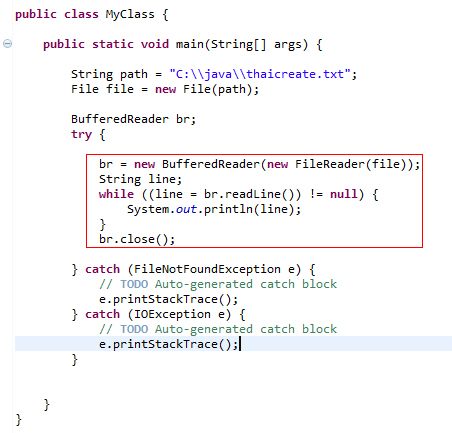
- #PHP TRY CATCH SPECIFIC EXCEPTION HOW TO#
- #PHP TRY CATCH SPECIFIC EXCEPTION MANUAL#
- #PHP TRY CATCH SPECIFIC EXCEPTION CODE#
#PHP TRY CATCH SPECIFIC EXCEPTION CODE#
With the release of PHP 7 to generalize the error reporting so we can catch all types of errors using both Error and Exception most errors are now reported by throwing Error exceptions. try, which allows a try-block of code containing one or more possible exception generations, to be tried catch, which defines a handler for a specific.

This code not caught in the try block and will show a TypeError: PHP Fatal error: Uncaught TypeError: Unsupported operand types: string + string In PHP 5 code the try-catch blocks only works with exceptions but trying to catch any other error related to the base Error class requires that we define a custom error handler using php set_error_handler() function. The other types of errors is the exceptions which extends the Exception class and can be easily caught using try-catch blocks. 1 To handle specific kind of exceptions, you have to cerate your own exceptions (that's right) but in your business logic you have to throw the exception you created and then catch it (wherever you want to do the handling logic.) check this example here : eval.

Examples of these errors ArithmeticError, ParseError, TypeError, etc. The try block contains the code that may throw an exception, and the catch block contains the code that will. To report these errors we have to write a custom error handler or by checking for errors directly. The basic syntax for handling exceptions in PHP is the try-catch block. Throwable::getTraceAsString Gets the stack trace as a string.

Throwable::getTrace Gets the stack trace. Throwable::getLine Gets the line on which the object was instantiated. Throwable::getFile Gets the file in which the object was created. Exceptions can be attempting to read a file that doesn’t exist or connecting to the database server that is currently down. Throwable::getCode Gets the exception code. The catch block executes when a specific exception is thrown. Introduction to the PHP trycatch statement In programming, unexpected errors are called exceptions. It contains the code to catch the exception, which is thrown by throw keyword in the try block.
#PHP TRY CATCH SPECIFIC EXCEPTION HOW TO#
Throw new MyException('Division by zero.However in PHP as we know there are two types of errors, the traditional errors which are instances of the Error class. Summary: in this tutorial, you will learn how to use the PHP try.catch statement to handle exceptions. Set_exception_handler('exception_handler')

It means you can make the code execution continue even if errors are detected. The try block contains the code that may throw an exception, while the catch block is used to catch. A PHP exception is a specified error that the system can catch and handle. See Exceptions for more information about Exceptions in PHP. The try-catch block is used to handle exceptions in PHP. You should not throw a PDOException from your own code.
#PHP TRY CATCH SPECIFIC EXCEPTION MANUAL#
It will help diagnose your issue a bit better. PHP Manual Function Reference Database Extensions Abstraction Layers PDO Change language: Submit a Pull Request Report a Bug The PDOException class (PHP 5 > 5.1.0, PHP 7, PHP 8) Introduction Represents an error raised by PDO. Try the following modification of the original script, and paste your results. My initial though is you have a typo in the name of the exception you are catching/throwing, but if your code is exactly the same I'm not sure exactly what is going on.


 0 kommentar(er)
0 kommentar(er)
